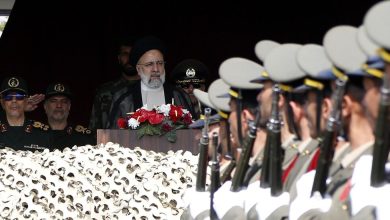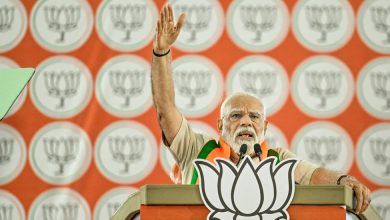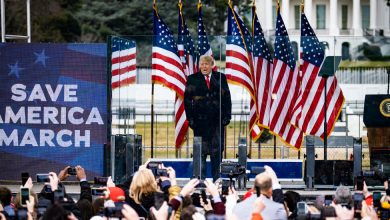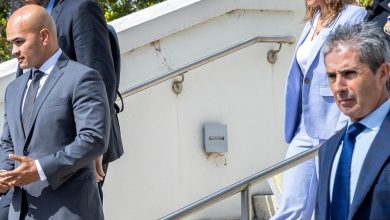Charles Kernaghan, Scourge of Sweatshops, Is Dead at 74

Charles Kernaghan, who with a single-minded passion and tireless energy exposed the prevalence of sweatshop-made goods in America’s toy sections, department stores and celebrity fashion lines, died on June 1 at his home in Manhattan. He was 74.
His sister, Maryellen Kernaghan, announced the death but did not provide a cause.
As the longtime director of a shoestring organization called the National Labor Committee, Mr. Kernaghan was among the first activists to show that the seemingly magical drop in prices for a wide range of consumer goods in the 1980s and ’90s was the result of American companies’ shift of production to developing countries, where workers often toiled in dangerous conditions for pennies an hour.
He specialized in the high-profile takedown, going after brands like Nike, Disney and Walmart. He targeted Bratz dolls, Eddie Bauer outdoor wear and Microsoft wireless mice. In 2007 he showed that crucifixes sold at St. Patrick’s Cathedral in Manhattan came from a Chinese sweatshop.
A self-described introvert, Mr. Kernaghan became a different person in front of an audience. He could speak for hours, rattling off stories and data in a way that gave a human face to the free-trade debate.
“He had a worldview, which is that behind all the happy talk of the apparel industry and corporate social responsibility was in fact a brutal, exploitative industry that was based on a global race to the bottom, and he took it upon himself to expose that hypocrisy,” Mark Levinson, the chief economist at Workers United and the Service Employees International Union, said in a phone interview. “And he did it brilliantly.”
Mr. Kernaghan’s first big exposé came in 1992, when he and his colleagues showed how American aid subsidized the construction of sweatshops in the developing world. Their report, which provided the basis for a “60 Minutes” segment, led to legislation banning U.S. support for factories that do not meet labor and safety standards.
In 1995, after spending months investigating El Salvadoran factories that supplied the Gap, he released a report showing how much the apparel company relied on sweatshop labor. To ram his point home, he brought one of the workers, a 15-year-old girl named Judith Viera, on a 14-city speaking tour.
At first, the Gap denied his charges; then it blamed its suppliers. But after protests erupted against the company, it agreed to allow independent monitors into the plants.
While he was on a research trip to a Gap supplier in Honduras, a worker slipped him a tag with a different name on it: that of the television host Kathie Lee Gifford. She was earning $9 million a year licensing her name to a brand sold at Walmart, and boasting that part of the proceeds went to charity.
Mr. Kernaghan did more digging, and in April 1996 he told Congress what he had found: To make Ms. Gifford’s clothing, girls as young as 15 worked for 31 cents an hour, 75 hours a week.
Two days later, Ms. Gifford, on her show “Live With Regis and Kathie Lee,” fought back tears as she tried to defend herself, calling Mr. Kernaghan’s testimony “a vicious attack.”
But she also eventually agreed to allow monitors, and Mr. Kernaghan — now known as “the man who made Kathie Lee cry” — became a force for the apparel industry to reckon with. In 1997 he rented a plane to fly over the Academy Awards, trailing a banner that read, “Disney Uses Sweatshops.”
“Charlie had a knack for publicity,” Jo-Ann Mort, a communications consultant who worked with garment-industry unions, said in a phone interview. “He knew how to get public attention on the issue.”
When he wasn’t in Central America or Asia, he was touring the lecture circuit. He gave up to 85 speeches a year, often with a sweatshop worker in tow, or with a bag from which he would pull a T-shirt or sweater and yell, “There is blood on this garment!”
He often spoke on college campuses, and in the late 1990s he helped inspire the student anti-sweatshop movement, which in turn became a significant part of the anti-free-trade coalition of the 2000s.
“He was a dynamic orator who could debate anyone on these issues,” said Peter Romer-Friedman, a civil rights lawyer who helped lead the campus anti-sweatshop movement as an undergraduate at the University of Michigan, and who considers Mr. Kernaghan a mentor. “He was just one these guys, you could feel the passion down to his bones.”
Charles Patrick Kernaghan was born on April 2, 1948, in Brooklyn. His father, Andrew, was a Scottish immigrant who installed acoustic tiles, and his mother, Mary (Znojemsky) Kernaghan, was a volunteer social worker born in what was then Czechoslovakia.
His parents instilled in Charles a strong sense of social justice: They fostered more than 20 children, and they pushed him, his sister and his brother toward community-focused careers. (His sister worked for a nonprofit, and his brother, John, who died in 1990, was a Jesuit priest).
His sister is his only immediate survivor.
Mr. Kernaghan received a degree in psychology from Loyola University in Chicago in 1970, and a master’s in the same subject from the New School for Social Research in New York City in 1975. He later taught at Duquesne University, in Pittsburgh, but he soon abandoned his academic aspirations.
For a while, he drifted. In America and during extended trips through Europe and the Middle East, he worked as a carpenter, a steward and a stevedore; at one point he drove a cab late at night in New York City, with a hatchet on his dashboard to dissuade robbers.
He also took up photography, aspiring to use his camera to reveal social injustice. In 1985 he joined a peace march in El Salvador, organized to protest government-sanctioned violence against priests and labor leaders. His brought his equipment, and several of his photographs appeared in major newspapers, including The New York Times.
It was during that trip that he first encountered members of the National Labor Committee in Support of Democracy and Human Rights in El Salvador, a tiny New York-based organization that operated out of office space provided by a garment workers union. Through it, he became active in the movement to expose America’s role in supporting right-wing violence in Central America, and he eventually joined the committee’s staff. He became director in 1990.
As he deepened his involvement, Mr. Kernaghan began to receive threatening phone calls telling him to stop his activism. One night in 1988, he was asleep in his Manhattan apartment when a man came through the window, said “I’m going to kill you,” and stabbed him in the chest with a bread knife.
Medics took Mr. Kernaghan to the hospital, but when doctors told him he did not have any life-threatening injuries, he slipped out, and he was back at work a few days later. The assailant was never caught.
Mr. Kernaghan’s group moved in 2008 to Pittsburgh at the invitation of the United Steel Workers union. It also changed its name to the less unwieldy Institute for Global Labor and Human Rights.
He announced his retirement in 2017. But he insisted there was more work to be done.
“If our clothes could talk,” he told The Pittsburgh Post-Gazette in 2012, “they would be screaming.”




